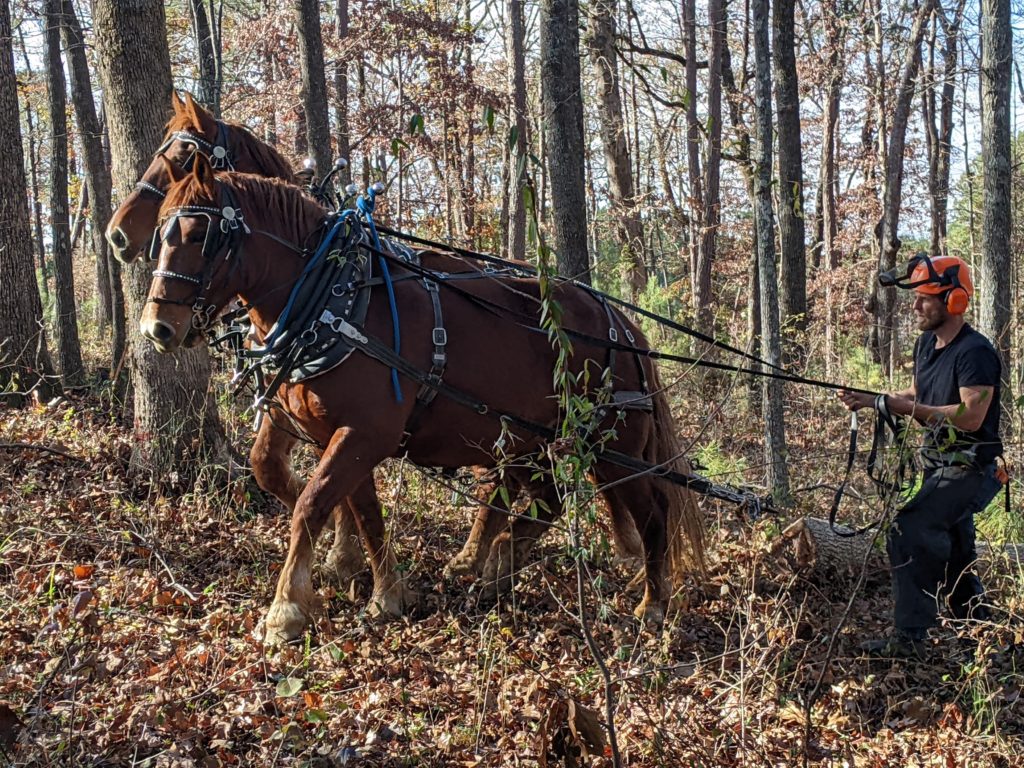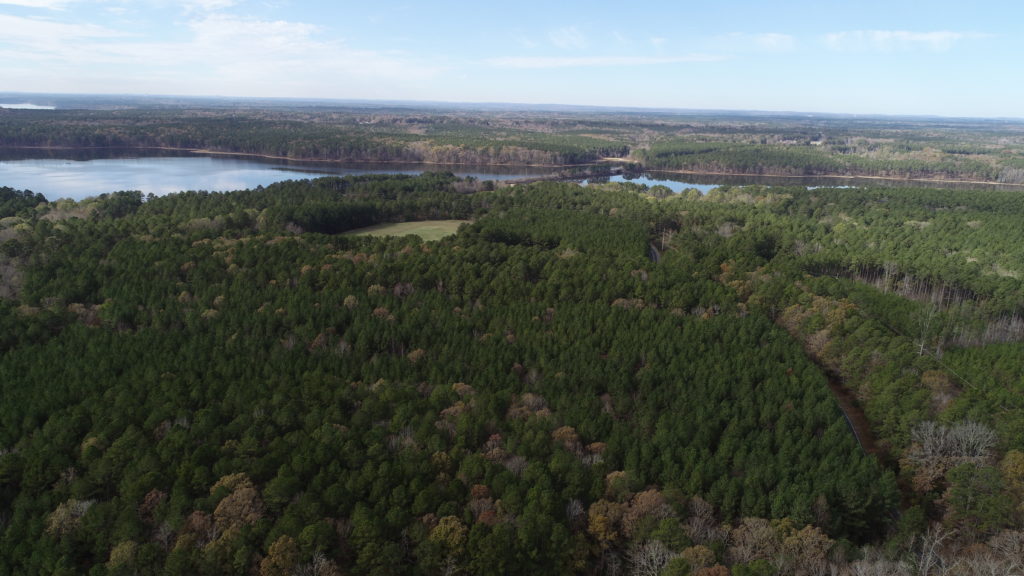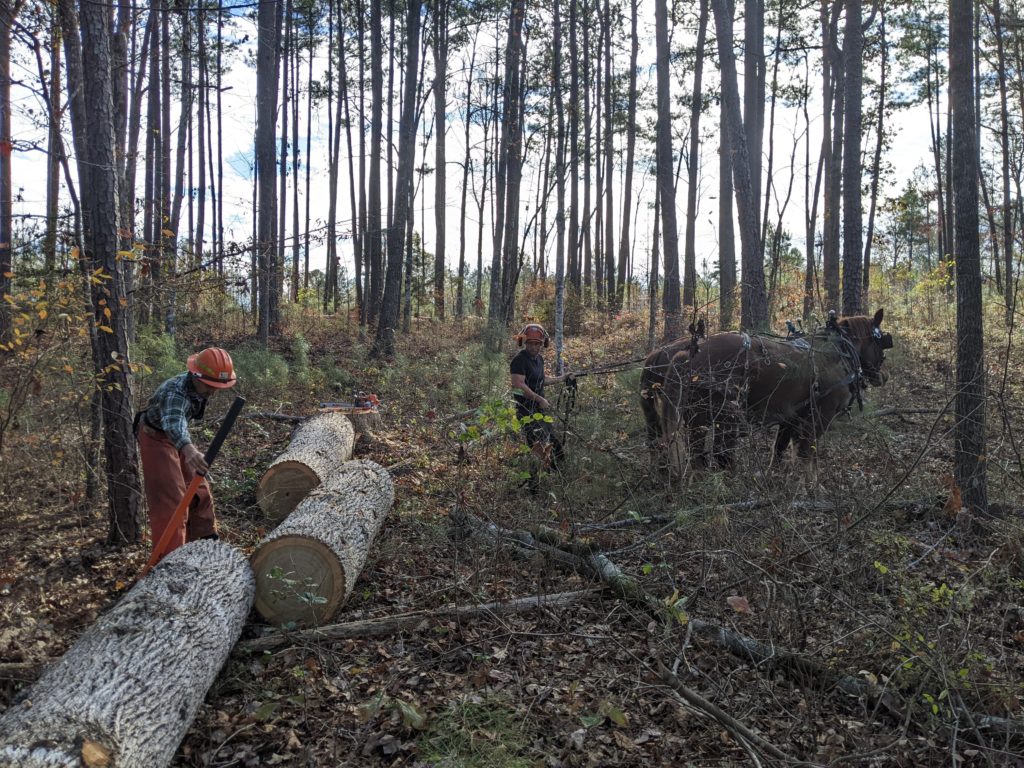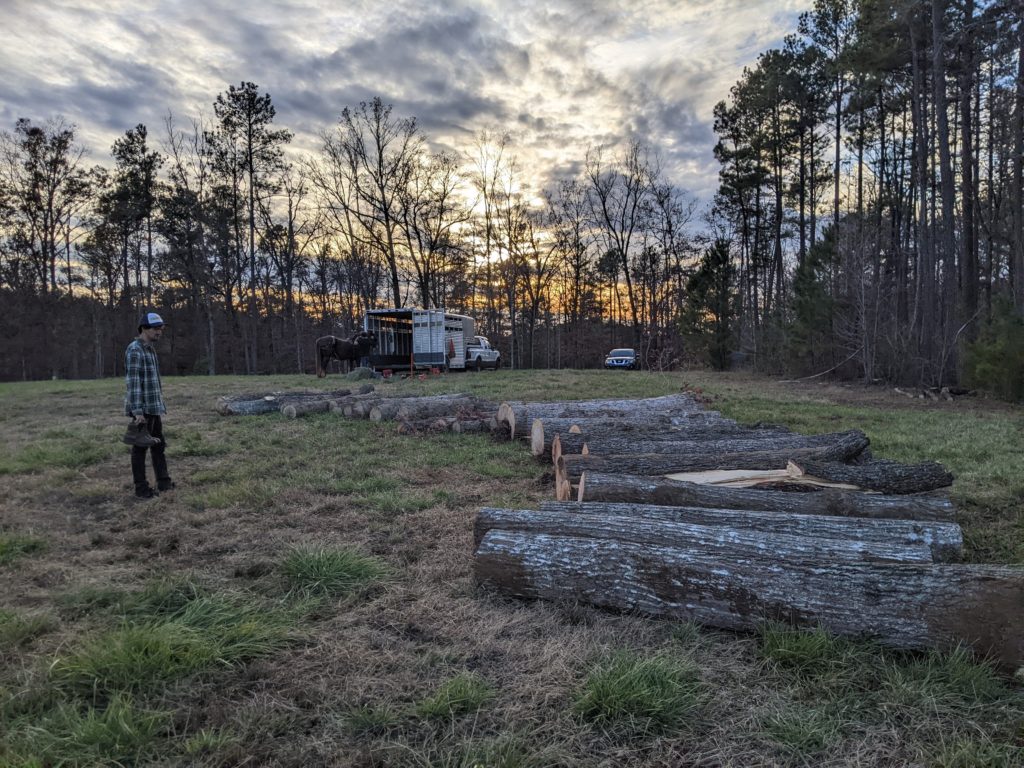
Seeing a team of sturdy draft horses pulling a log down a forest path may invoke images of the old days before the advent of machines. Such was the sight recently at Three Bears, a TLC owned site in the Fall Lakes Watershed in northern Wake County. Our Stewardship staff enlisted the service of local horse logger and his draft horse team to help selectively thin the forest in order to create a healthier and more diverse habitat.
Three Bears is a part of Little Beaver Dam Creek Slopes, a 226-acre property that TLC protected in 2021 with funding made possible in part by the City of Raleigh Watershed Protection Program, Wake County Open Space Bonds, and the Caterpillar Foundation. TLC’s acquisition of this property placed protections on over 5 miles of stream located on critical land that provides drinking water to Wake County communities and beyond. The site additionally creates a large natural habitat area that is known to host birds like bobwhite quail and plants including white oaks and slippery elms.

When TLC protects land, it then becomes our mission and responsibility to take care of the land in perpetuity. Little Beaver Dam Creek Slopes and other large TLC properties each have their own forest stewardship plans, which provide a holistic view of all natural resources on the site to inform management decisions. A forest stewardship plan differs from a forest management plan by considering things like water resources, wildlife habitat, and recreation, instead of focusing solely on forest management and timber production. TLC utilizes consulting foresters who develop these forest stewardship plans with TLC’s input to direct our ongoing activities on these properties, including this recent logging operation.
Horse logging as sustainable timber management

Logging with a horse has a much smaller impact on the land than using more modern, machine-heavy methods. Unlike logging machinery, horses are much lighter and agile, which can allow for a broader range of options when determining which trees to selectively harvest and which to leave intact. For a conservation focused organization, this is key to minimizing the impacts of this operation.
The harvest was specifically designed to improve the forest habitat by increasing sunlight availability to the forest floor. Remaining tree seedlings such as oaks and hickories will be “released” and given space to grow and occupy the canopy gaps created. Because of this operation, there will be more structure and habitat diversity in the forest stand at Three Bears.
The horse logger and the TLC crew felled the marked trees with chainsaws, and the hauling was done exclusively by horse drawn harness. The trees’ limbs were trimmed, and then the log was dragged to a pre-determined location. In total, fewer than 10 trees were harvested during this operation.

After the harvested logs are milled, they will be used in the upcoming construction of an agriculture pavilion at Williamson Preserve. Breaking ground in early 2023, this project is funded in large part by the Jandy Ammons Foundation, a Raleigh-based non-profit that awards grants to innovative, project-based endeavors that improve local communities.
Using horsepower to restore habitats
This is not the last time TLC will partner with this horse logging team. Funded by a grant from the Cornell Lab of Ornithology, TLC is actively working to restore and improve habitats for birds and other native wildlife at Brumley Nature Preserve. As part of this project, TLC will be working with the horse logging team to selectively harvest loblolly pines and sweetgum trees – early successional species that densely populate the preserve’s forests.
The thinning along the woodland edge will create a gradual transition zone; rather than going abruptly from open field to closed canopy forest. This habitat type is preferred by many native birds (like barred owls and eastern bluebirds), plants (including wild quinine, Parthenium integrifolium), and reptiles (corn snakes and eastern fence lizards, among others). The edge habitat is also favorable for use during migrations for many birds, including most warblers. The selected trees that are harvested have no high value as timber and will then be left on site to naturally break down, further supporting local wildlife as new habitat.
Be on the lookout for more updates and news around these exciting upcoming projects, made possible by collaboration and a little help from technology from the past!
